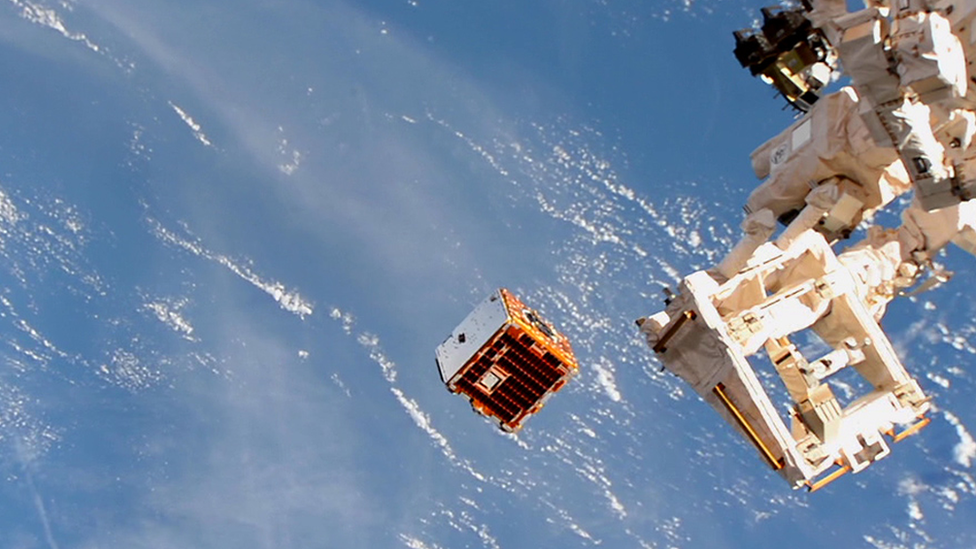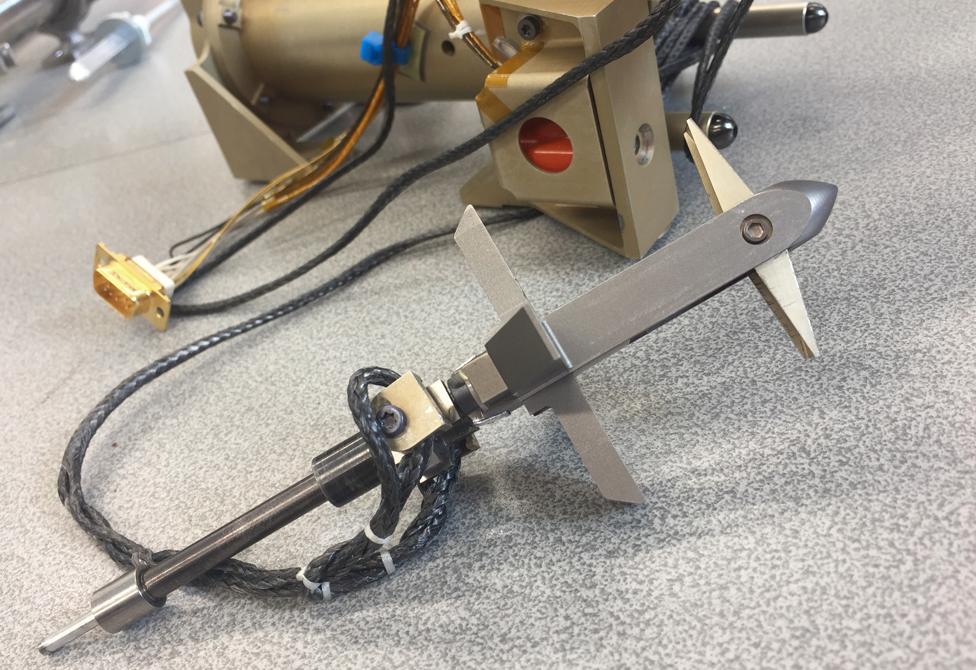RemoveDebris: UK satellite tracks 'space junk'
- Published
RemoveDebris tracks some experimental "junk"
The British-led mission to test techniques to clear up space junk has initiated its second experiment.
The RemoveDebris satellite, external ejected a small object on Sunday and then tracked it using a camera and laser system.
This vision-based navigation (VBN) technology essentially tells a pursuing spacecraft how its target is behaving - how it's moving and even tumbling.
It would provide the information to safely approach the object ready for capture.
RemoveDebris has already tested a net system. In that experiment, a small object was again ejected before having a mesh thrown around it.
The satellite RemoveDebris was sent up to trial a net and a harpoon also
Two more experiments are planned for the mission, which is directed out of the University of Surrey and funded in large part by the European Union.
Test number three will see a harpoon fired at a target. Test four will deploy a "drag sail" - essentially, a big membrane that brushes against residual air molecules at an altitude of just under 400km. This should bring the satellite out of orbit on the scale of months, rather than years.
Prof Guglielmo Aglietti, Director of the Surrey Space Centre at the University of Surrey, said: "While [the VBN] experiment may not be as eye-catching as its predecessor, it could prove to be just as consequential.
"What we have proved with this successful test is that the vision-based-navigation system is able to provide accurate information about a piece of debris, its behaviour and its flight of travel - information crucial in an active debris removal mission."

The RemoveDebris is a demonstration satellite that was launched from the space station in June
There are now millions of discarded pieces of metal and other materials in orbit - everything from old rocket segments to accidentally dropped astronaut tools, even flecks of paint.
The fear is that if we do not soon start taking this litter out of the sky, it will become a significant threat to active satellites.

The miniature harpoon to be tested on the mission